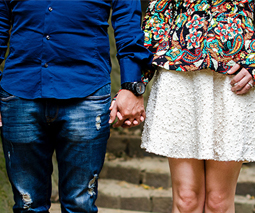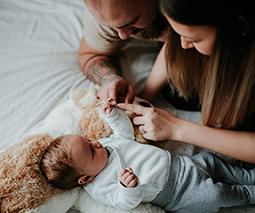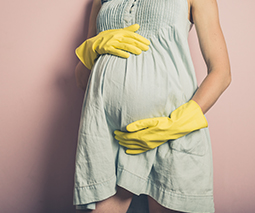Rare semi-identical twins born to Australian mum – via two different sperm

Brisbane four-year-olds have just been confirmed as some of the rarest twins in the entire world.
Mum’s the word
This little boy and girl are the second ever set of semi-identical or sesquizygotic twins. They were the first ever semi-identical twins to be identified by doctors whilst still in utero. These twins share 100 percent of their mother’s DNA, but only have a proportion of their father’s DNA.
How does this happen? we hear you ask. It happens when one egg is fertilised by two different sperm.
Sounds simple but is very, very rare.
Apparently the mum in question was originally told she was carrying identical twins, based on an early ultrasound. But later on in the pregnancy, it was discovered that the twins were a boy and a girl. This confirmed that they are not identical twins.
Read more stories about twins:
- Here’s what they don’t tell you about birthing twins naturally
- What are your chances of having twins or triplets?
- 7 common worries ALL mums of twins have
One egg, two sperm
Doctors then analysed the foetuses genes via the amniotic fluid in their individual birth sacs. They found that the twins shared 100 percent of their mother’s genes but only 78 percent of their father’s, Live Science reports.
Human DNA usually comes from two sources: one set of chromosomes comes from the mother’s egg and one set comes from the father’s sperm.
To put this into perspective let’s look at how the different kinds of twins are actually conceived.
Fraternal twins are made when two separate sperm fertilise two separate eggs. These twins have half of their mum’s genes and half of their father’s genes.
Identical twins are made when one sperm fertilises one egg and that fertilised egg splits into twins which share all of their mother and father’s genes.
And semi-identical twins – like these magical Brisbane twins – are made when one egg is fertilised by two different sperm (possibly at the exact same moment) and then splits. As we said, the twins have all their mum’s genes but only part of their dad’s.

A successful semi-identical pregnancy is rare
“Normally, the resulting embryo dies because it has three sets of chromosomes instead of the usual two,” New Scientist reports.
“In the case of the Brisbane twins, the embryo split in two with each half somehow ending up with the correct number of chromosomes. They received exactly the same set of chromosomes from their mother, but one twin got their second set of chromosomes from one sperm and one got it from another.”
While “every sperm cell looks essentially the same, with that characteristic tadpole appearance, inside, sperm cells carry differences within their genes — even cells from the same man.”
And that’s why the DNA from these twins dads is a little different than the norm. Because they gathered their genes from two differing sperm!
The twins have apparently endured some health challenges because of their genetic make-up, but are now doing well.









